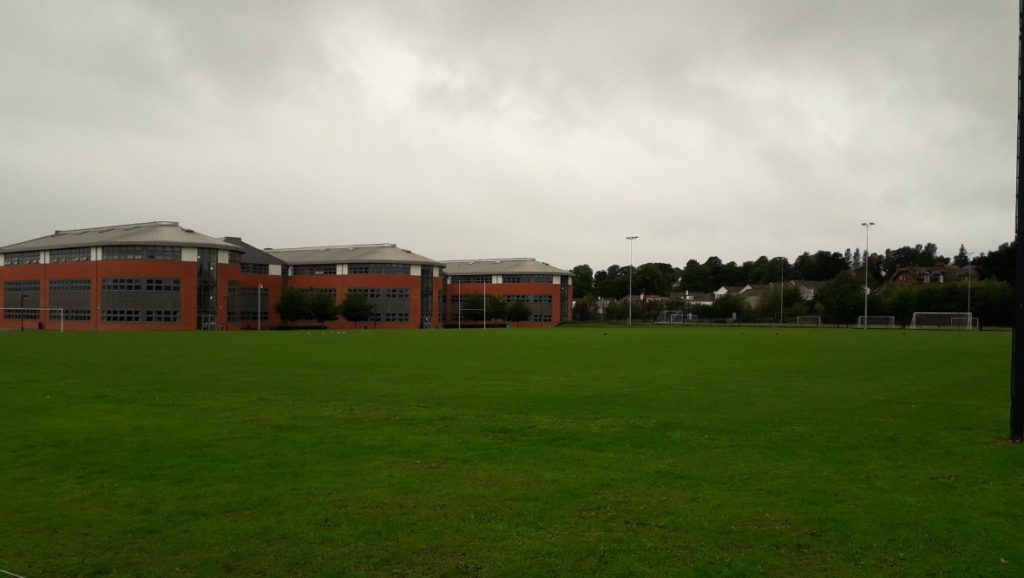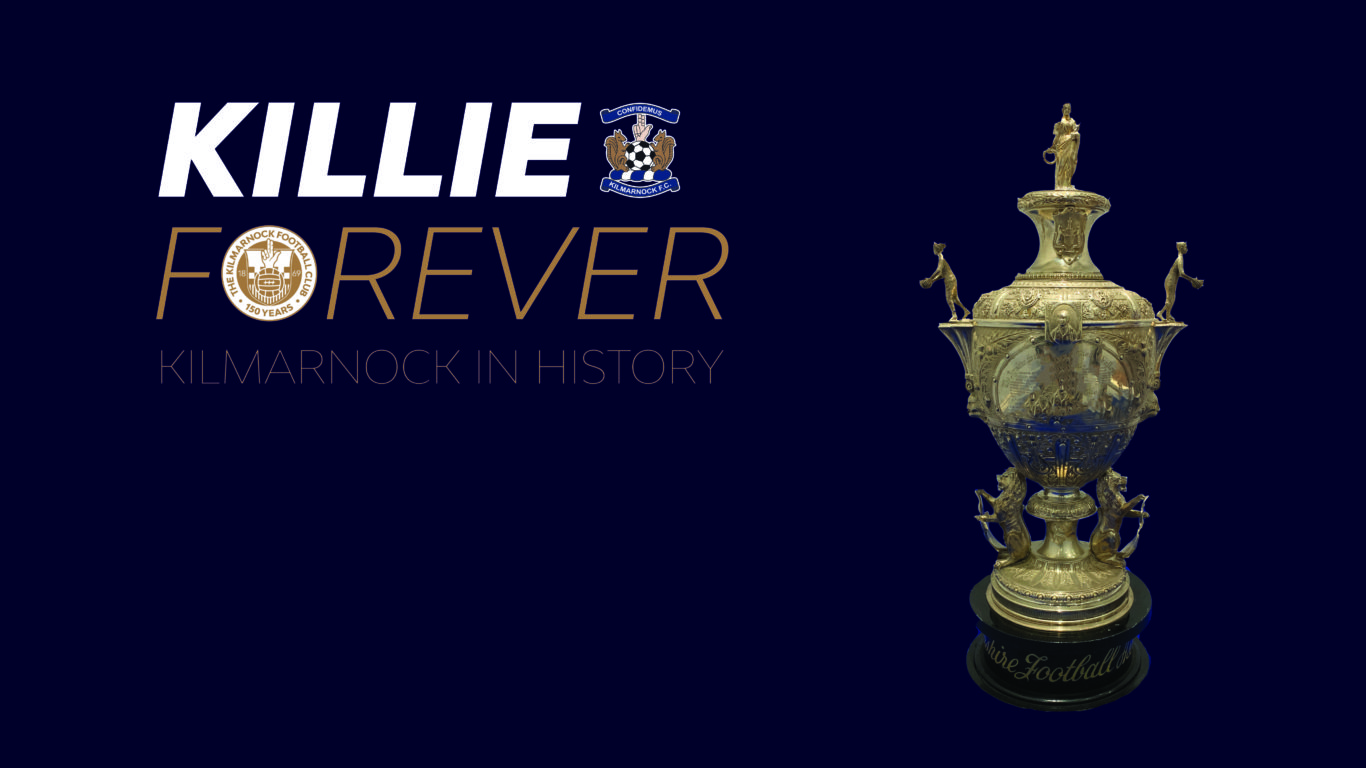Kilmarnock in History: Birth of the Ayrshire Cup
Welcome to the second installment of our Kilmarnock In History series, by club historian John Livingston.
PART TWO
In early November 1873, a few weeks after losing their maiden game of association rules against Renton in Glasgow, Kilmarnock fulfilled a rugby rules fixture against Ayr Academy, but on December 6, they entertained the mighty Queen’s Park.
The Glasgow club had been trying for the best part of a year to play Kilmarnock, but were always told it was rugby rules that Kilmarnock played. However, after having become one of the founding members of the Scottish F.A. in March and then played in the first ever Scottish F.A. Cup tie in October, Kilmarnock agreed to play them. It turned out to be an eye-opening experience, as they were thumped 9-0. Just three weeks later, on December 27, Kilmarnock finally recorded their first victory in an association football rules game.
It was by 1-0 against Paisley Craigielea at Rugby Park, and just like Kilmarnock in the Scottish F.A. Cup defeat from Renton, the Paisley club were playing their first game of football to association rules. The scorer of Kilmarnock’s first ever goal was Peter Brown.
Moving into the new year of 1874, Kilmarnock played a few more association rules games, but despite having committed to playing in future to association rules in December 1873, which led to a number of rugby rules-minded members leaving, they fulfilled a previously arranged rugby rules fixture away to Paisley Craigielea on St. Valentine’s Day.
The fixture in Paisley was openly reported as being Kilmarnock’s first to rugby rules in 1874, and as far as we can ascertain, it was the last known officially recorded rugby rules fixture played by the Kilmarnock Football Club.
Due to street and housing developments, the Rugby Park pitch had moved slightly westwards but it was still not conducive to playing association rules, and the search for a new home ground, which had actually been going on since the club was constituted in late October 1872, was intensified.

The Grange area as it appears today.
Around mid-March, a new site for a home ground was discovered in the Grange, Irvine Road area, where a farmer was willing to rent out a field to the club at a very cheap rate. The 2nd XI team played a game on it against Mauchline, but because of the rough condition of the playing area, it was agreed the club would take up an offer to use the Kilmarnock Cricket Club ground at Holm Quarry to play a late Thursday afternoon fixture against Bellahouston Wanderers on 9th April 1874.
This allowed more time for the pitch in the Grange to be better prepared for future games. The game at Holm Quarry ended in a 2-2 draw, but the pitch in the Grange, Irvine Road area was used thereafter for the few 1st and 2nd XI fixtures remaining before the end of the season.
The 1874-75 campaign began reasonably well, with the only setback being a 7-0 defeat away to Queen’s Park. They recovered well from it, because the following Saturday, 21st October, they gained their first ever win in the Scottish F.A. Cup, beating Vale of Leven Rovers 4-0 at the Grange.
However, the Cup participation ended in the next round when Glasgow club Eastern won 3-0 at the Grange. Indeed, over the rest of the campaign, only one other game was lost, and that was by 2-0 on 23rd January 1875, when Queen’s Park visited the Grange. The club remained at the Grange for 1875-76, although for some strange reason the club’s official fixture card for the season stated two home grounds, Holm Quarry and Grange, although all known games played by the 1st XI were at the Grange.

Today, the Grange is one of Kilmarnock’s main schools.
However, during that summer, the farmer who owned the field in the Grange decided he wanted his field back, and the club soon struck a rental deal with the Kilmarnock Cricket Club to play all the home fixtures in 1876-77 at Holm Quarry.
Around this time, the ideology of Kilmarnock F.C. committee member John Wallace, ably assisted by another member Dan Gilmour led to the formation of the Ayrshire Football Association. It was the inspirational fund-raising work of both, in and around the surrounding areas of Kilmarnock, that led to the purchase of the magnificent Ayrshire F.A. Challenge Cup, which was designed and made by Kilmarnock-based jewellers and silversmiths, John Cameron & Son.
The new Cup competition was to start in 1877-78, but just before the season began, a huge hike in the rent of Holm Quarry was administered on Kilmarnock F.C. by the Cricket Club. This caused a major fall-out amongst some of the members, a few of whom were members of both the clubs, but the Kilmarnock Football Club was determined not to pay over the odds, and they secured a short-lease rental with the farmer in the Grange, and played their home fixtures on their old pitch off the Irvine Road until the end of November 1877.
New housing and road developments in the vicinity of Dundonald Road/South Hamilton Street and Charles Street saw some ground become available nearer to where the present Rugby Park site is today, and the club moved there, playing their inaugural game on 1st December 1877 against Dalry Rangers.
This fixture was the 1st Round tie in the new Ayrshire F.A. Challenge Cup competition, and it ended in a 5-1 win. The fall-out with the Kilmarnock Cricket Club led to their members starting their own football club in the late summer of 1877.
It was known as Kilmarnock Cricket and Football Club, but after a major complaint by the members of the real Kilmarnock Football Club, the name was later changed to Kilmarnock Athletic.




